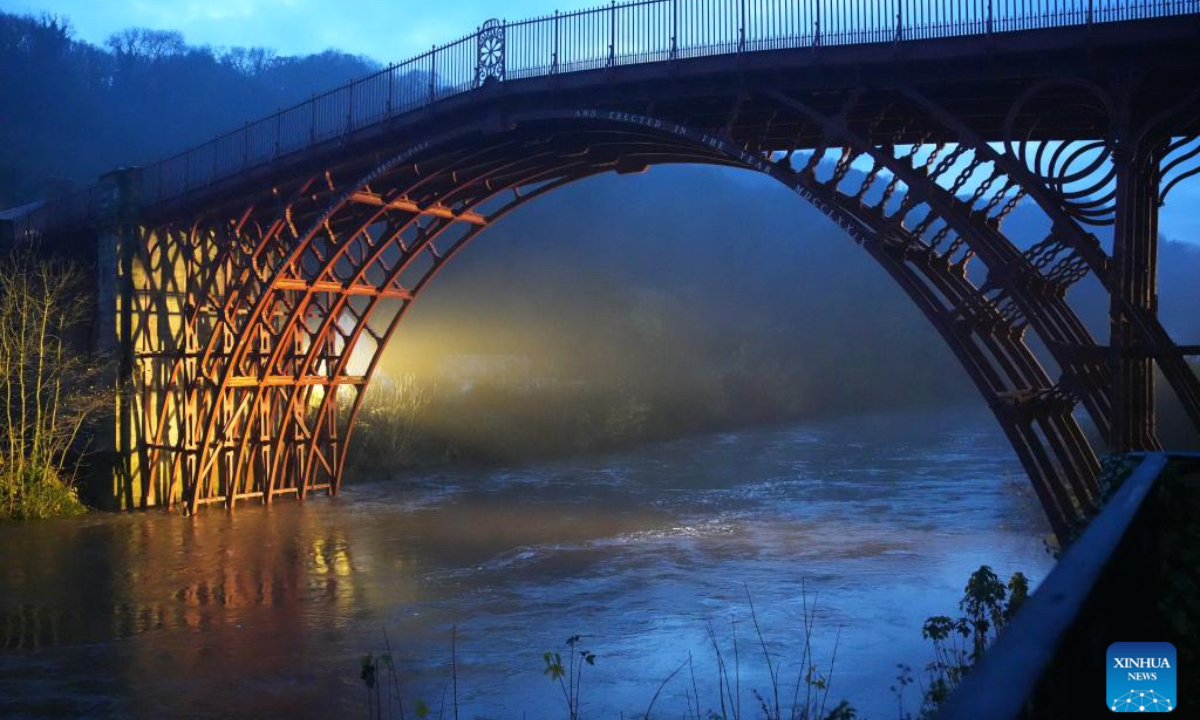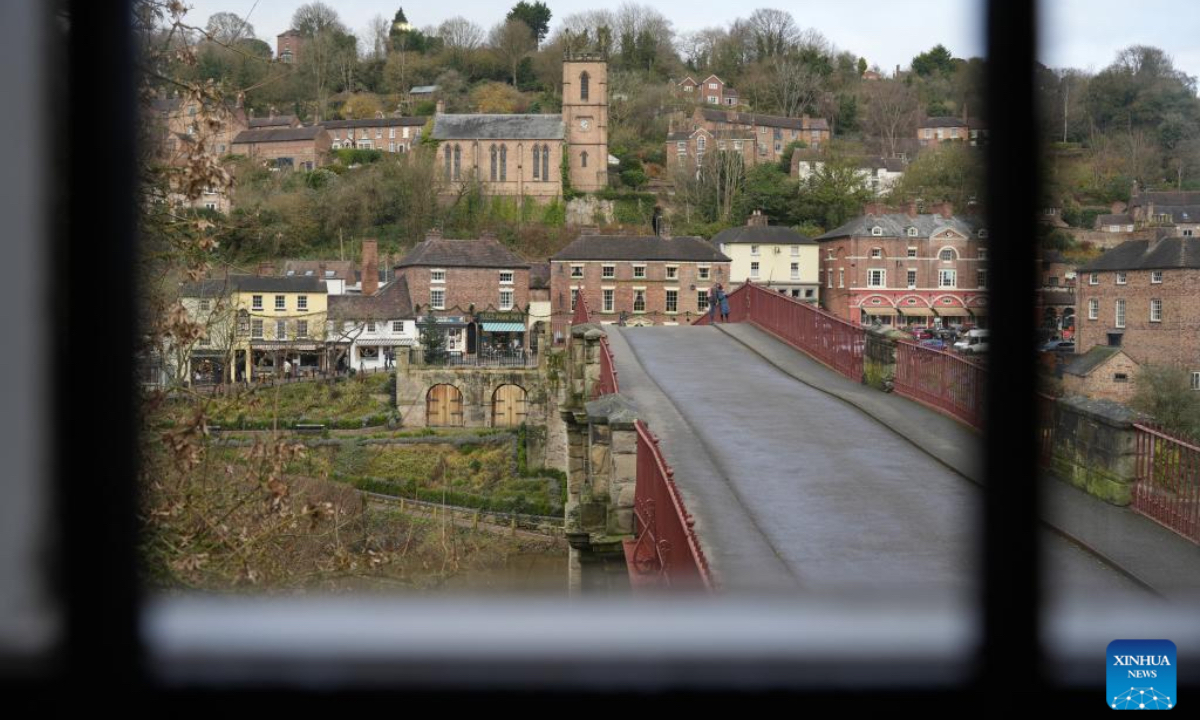
This photo taken on Nov. 28, 2024 shows a view at dusk in Ironbridge Gorge, Shropshire, Britain. Ironbridge Gorge, nestled in the heart of Shropshire, England, is a site of immense historical significance. Today, the gorge stands not only as a monument to industrial ingenuity but also as a vibrant hub of tourism and education. (Photo:Xinhua)

This photo taken on Nov. 29, 2024 shows a view in Ironbridge Gorge, Shropshire, Britain.
Ironbridge Gorge, nestled in the heart of Shropshire, England, is a site of immense historical significance. Today, the gorge stands not only as a monument to industrial ingenuity but also as a vibrant hub of tourism and education. (Photo:Xinhua)
Ironbridge Gorge, nestled in the heart of Shropshire, England, is a site of immense historical significance. Today, the gorge stands not only as a monument to industrial ingenuity but also as a vibrant hub of tourism and education.
The world's first iron bridge, constructed in 1779 by Abraham Darby III over the gorge, symbolizes the beginning of the transformative First Industrial Revolution, which shaped the global industrial landscape.
During the 18th century, Ironbridge Gorge became synonymous with industrial progress. The area rose as a global manufacturing powerhouse with its abundant natural resources, including coal, iron ore, and limestone. Using coke instead of charcoal in smelting iron revolutionized its production and laid the foundation for modern industrial practices.
The gorge's historical significance earned it a place on the UNESCO World Heritage list in 1986. This recognition highlighted the region's role in shaping the modern world and underscored the need to preserve its rich heritage.
Nick Ralls, CEO of the Ironbridge Gorge Museum Trust, emphasized the importance of safeguarding this history. "Ironbridge isn't just a local story but a cornerstone of global industrial heritage. We have a responsibility to ensure this history is accessible and relevant to future generations," he said.
Blists Hill Victorian Town, one of the key attractions in the Ironbridge Gorge, offers a unique glimpse into 19th-century life. Ben Jones, deputy Visitor Engagement Manager at the town, described it as a "living museum" where history comes to life. "Visitors can step back in time and experience the daily lives of Victorians, from blacksmiths in action to traditional sweet shops," Jones said.
The immersive approach has attracted diverse audiences, from school groups to international tourists. Seasonal events, such as the Victorian Christmas markets, add to the town's appeal, drawing over 100,000 visitors annually.
Maintaining a site of such historical importance comes with its challenges. Ralls told Xinhua about the delicate balance between preserving the site's historical characteristics and meeting the needs of modern visitors. The Iron Bridge, a marvel of 18th-century engineering, underwent extensive restoration work in 2017, employing cutting-edge techniques to preserve its structure while maintaining its original aesthetic.
The trust also works closely with the local community. Volunteer involvement plays a significant role in supporting various museum operations. "For example, within our collections learning department, we've got a big team of volunteers that help catalog and sort through collections that have yet to be worked through," Ralls explained.
Volunteer groups "provide funding to help projects. They raise money for projects that we want them to. They run lectures, and they support collections and learning," said Ralls.
Ironbridge Gorge's tourism industry also has had a transformative effect on the local business. Andreas Ilperis, a local hotel manager, noted that the influx of tourists has revitalized businesses across the region. "Heritage tourism is a lifeline for our community. It brings visitors from around the world, creating opportunities for local businesses and artisans," he said.
The collaboration between the museum trust, local volunteers, and businesses has created a cohesive strategy that benefits both the community and the site. Events such as the Gorge Heritage Festival and walking tours boost tourism and foster a sense of pride among residents.
Ironbridge Gorge's approach to integrating historical preservation with tourism offers valuable insights for other regions. The site's ability to adapt while remaining true to its roots is a testament to the power of strategic planning and community involvement.
Ralls revealed plans to expand Ironbridge's global reach through cultural exchanges and artifact loans to museums abroad. "We are in discussions to loan pieces from our collection to museums in China, sharing our story with new audiences and learning from their heritage preservation practices," he said.
He is excited about fostering cultural exchanges and welcoming visitors from China, noting that the site's historical importance as the birthplace of the Industrial Revolution offers a sense of place and connection to industrial heritage.





